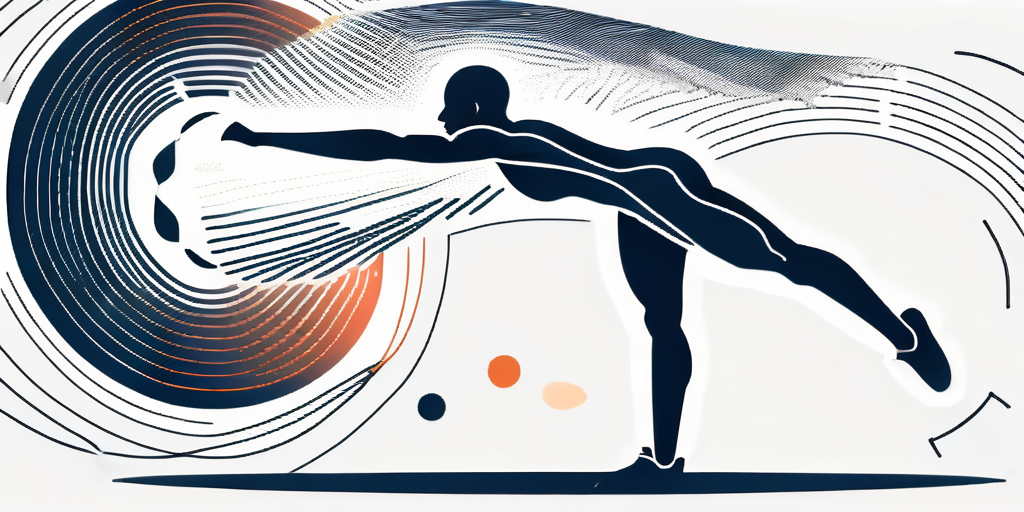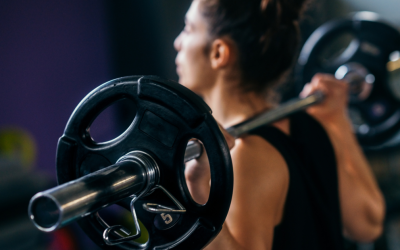Athletes always look for ways to improve their performance and gain that competitive edge. Whether it’s shaving off seconds on a sprint or increasing endurance for a marathon, the desire to excel is constant. One approach that has gained popularity in recent years is applied kinesiology. This article will explore applied kinesiology and how it can benefit athletes in their quest for athletic excellence.
Understanding Applied Kinesiology
Applied kinesiology is a holistic approach to healthcare that focuses on the connection between muscle strength and overall well-being. It is based on the premise that our muscles indicate our body’s internal health and function. By assessing the strength and weakness of specific muscles, practitioners of applied kinesiology can identify any imbalances or dysfunctions within the body.
One key principle of applied kinesiology is muscle testing. During a muscle test, the practitioner applies gentle pressure to a specific muscle while the patient resists the pressure. If the muscle remains strong, it is considered to be in good health. However, if the muscle weakens or gives way, it indicates an underlying issue that needs to be addressed.
What is muscle testing?
Now that we have explored the basics of applied kinesiology and its integration with athletic training, let’s delve deeper into the fascinating world of muscle testing. When a practitioner performs muscle testing, they apply gentle pressure to specific muscles while the athlete resists it. The practitioner then assesses the muscle’s response, looking for signs of strength or weakness.
During the muscle testing, the practitioner may ask the athlete to perform specific movements or exercises to evaluate muscle function further. This dynamic assessment allows for a more comprehensive understanding of the athlete’s muscular system and helps identify performance imbalances or weaknesses.
Once the muscle testing is complete, the practitioner can use the information gathered to develop a targeted treatment plan. This plan may include a combination of techniques such as manual therapy, corrective exercises, and nutritional recommendations. By addressing the specific weaknesses or imbalances identified through muscle testing, the practitioner aims to optimize the athlete’s performance and reduce the risk of injury.
It’s important to note that muscle testing is a skill that requires training and experience to perform accurately. Practitioners must deeply understand anatomy, physiology, and biomechanics to interpret the results effectively.
Additionally, muscle testing should always be conducted in a safe and controlled environment to ensure the athlete’s well-being. When done properly, muscle testing can significantly enhance athletic performance.
The Science Behind Applied Kinesiology
Applied kinesiology is rooted in anatomy, physiology, and biomechanics principles. It draws from various disciplines, including chiropractic care, acupuncture, and nutrition. Applied kinesiology provides a comprehensive health and performance enhancement approach by incorporating elements from these fields.
When it comes to anatomy, applied kinesiology delves deep into the intricate workings of the musculoskeletal system. It explores the connections between muscles, tendons, ligaments, and bones, understanding how they all work together to create movement and stability. Applied kinesiology practitioners can better assess and address any issues by thoroughly understanding the body’s structure.
In terms of physiology, applied kinesiology recognizes the importance of proper nerve function and blood flow. It understands that these factors are crucial to muscle strength and overall health. By ensuring that the nervous system is functioning optimally and blood is flowing freely to the muscles, applied kinesiology can help improve an individual’s well-being.
Biomechanics is another key aspect of applied kinesiology. It focuses on studying movement and how forces act upon the body. By analyzing an individual’s movement patterns and biomechanics, practitioners can identify any imbalances or inefficiencies contributing to muscle weakness or dysfunction. This knowledge allows them to develop targeted treatment plans that address these issues and optimize performance.
The Benefits of Applied Kinesiology for Athletes
Now that we have a basic understanding of applied kinesiology, let’s explore how it can specifically benefit athletes. One of the main advantages of this approach is its ability to identify and address imbalances or weaknesses that may be hindering athletic performance.
Through muscle testing and other assessment techniques, applied kinesiology can help athletes pinpoint specific areas of their bodies that may be under stress or not functioning optimally. By addressing these issues, athletes can improve their overall strength, flexibility, and coordination, ultimately leading to enhanced performance on the field or in the gym.
However, applied kinesiology goes beyond physical improvements. It also takes a holistic approach to athlete well-being. It recognizes that physical health is closely intertwined with mental, emotional, and spiritual well-being. By addressing all aspects of an athlete’s life, applied kinesiology helps create a more balanced and harmonious environment for optimal performance.
For example, if an athlete experiences high levels of stress or anxiety, it can negatively impact their performance. Applied kinesiology can help identify the underlying causes of these issues and provide strategies to manage and reduce stress. By promoting mental and emotional well-being, athletes can perform at their best and enjoy their sport more fully.
In conclusion, applied kinesiology is a comprehensive approach to healthcare that focuses on the connection between muscle strength and overall well-being. By understanding the science behind it and recognizing its benefits for athletes, we can appreciate its potential for optimizing performance and promoting a balanced and healthy lifestyle.
Key Techniques in Applied Kinesiology for Enhancing Athletic Performance
Now that we understand the benefits of applied kinesiology for athletes, let’s examine some key techniques used in this practice.

One technique commonly used in applied kinesiology is muscle testing. As mentioned earlier, muscle testing involves assessing the strength and weakness of specific muscles to identify any imbalances or dysfunctions. This technique allows practitioners to identify weak muscles and develop targeted strengthening exercises to address these weaknesses.
Another technique used in applied kinesiology is joint mobilization. This involves gentle movements and manipulations of the joints to improve mobility and range of motion. By enhancing joint function, athletes can perform movements more efficiently, reducing the risk of injury and improving overall performance.
Diet and nutrition play a significant role in athletic performance; applied kinesiology recognizes this. Practitioners of applied kinesiology can use muscle testing to identify any food sensitivities or imbalances in the body’s nutritional needs. By developing personalized nutrition plans, athletes can optimize their energy levels, enhance recovery, and improve overall health.
Furthermore, applied kinesiology incorporates the use of acupressure points to help enhance athletic performance. Acupressure points are specific points on the body that, when stimulated, can help improve energy flow, reduce pain, and enhance overall well-being. By incorporating acupressure techniques into their practice, applied kinesiologists can help athletes achieve optimal physical and mental states for peak performance.
Additionally, applied kinesiology often includes proprioceptive neuromuscular facilitation (PNF) stretching techniques. PNF stretching involves contracting and relaxing specific muscles to improve flexibility and range of motion. By incorporating PNF stretching into their training routines, athletes can improve their muscle elasticity, reduce the risk of injuries, and enhance their overall athletic performance.
The Role of Muscle Testing in Applied Kinesiology
Muscle testing is at the heart of applied kinesiology. This technique allows practitioners to gain insights into the body’s internal workings by assessing the strength or weakness of specific muscles.

Muscle testing can help identify imbalances or weaknesses hindering athletic performance. By pinpointing these problem areas, practitioners can develop individualized treatment plans that address these issues and promote optimal performance.
It’s important to note that muscle testing in applied kinesiology is not a standalone diagnostic tool. Instead, it is used with other assessment techniques and clinical judgment to create a comprehensive picture of an athlete’s health and performance.
Integrating Applied Kinesiology with Athletic Training
Applied kinesiology is not meant to replace traditional athletic training methods but can serve as a valuable complement. By incorporating the principles and techniques of applied kinesiology into their training regimens, athletes can achieve greater results.
For example, a strength and conditioning coach may use muscle testing to identify an athlete’s muscle imbalances or weaknesses. Armed with this information, they can develop a targeted training program to correct these imbalances and enhance overall performance.
FAQs About Applied Kinesiology for Athletes
Is applied kinesiology only for professional athletes?
Not at all! Applied kinesiology can benefit athletes of all levels, from weekend warriors to elite competitors. Whether a casual runner or a professional basketball player, applied kinesiology can help you optimize your performance and prevent injuries.
Are there any risks associated with applied kinesiology?
Applied kinesiology is generally safe when practiced by a qualified practitioner. However, as with any treatment modality, there are certain risks involved. It’s essential to consult with a trained professional to ensure that applied kinesiology is appropriate for your specific needs.
How long does it take to see results with applied kinesiology?
The timeline for experiencing results with applied kinesiology varies from person to person. Some athletes may notice improvements in their performance after just a few sessions, while others may require more time. Consistency and adherence to the treatment plan are crucial for achieving desired results.
Is applied kinesiology scientifically proven?
Applied kinesiology is based on scientific principles and draws from multiple disciplines, such as anatomy, physiology, and biomechanics. However, like many holistic approaches, applied kinesiology may not have extensive scientific research backing its effectiveness. Nonetheless, anecdotal evidence suggests that many athletes have experienced positive outcomes with this approach.
In conclusion, applied kinesiology offers athletes a unique approach to enhancing performance and overall well-being. By assessing and addressing muscle imbalances, incorporating personalized nutrition plans, and utilizing techniques such as joint mobilization, athletes can optimize their athletic abilities. So, whether you’re a professional athlete or a fitness enthusiast, consider exploring the world of applied kinesiology to unlock your true athletic potential.



